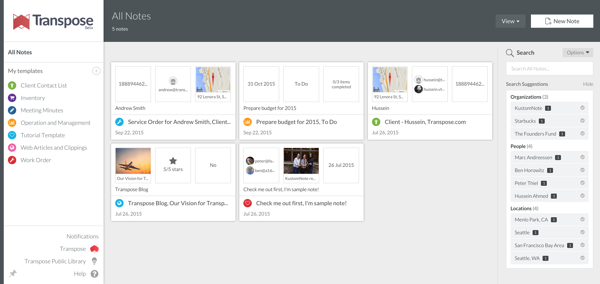The founders of Siri are working on a new service called Viv that can link disparate sources of information together to answer questions:
But Kittlaus points out that all of these services are strictly limited. Cheyer elaborates: “Google Now has a huge knowledge graph—you can ask questions like ‘Where was Abraham Lincoln born?’ And it can name the city. You can also say, ‘What is the population?’ of a city and it’ll bring up a chart and answer. But you cannot say, ‘What is the population of the city where Abraham Lincoln was born?’” The system may have the data for both these components, but it has no ability to put them together, either to answer a query or to make a smart suggestion. Like Siri, it can’t do anything that coders haven’t explicitly programmed it to do.
Viv breaks through those constraints by generating its own code on the fly, no programmers required. Take a complicated command like “Give me a flight to Dallas with a seat that Shaq could fit in.” Viv will parse the sentence and then it will perform its best trick: automatically generating a quick, efficient program to link third-party sources of information together—say, Kayak, SeatGuru, and the NBA media guide—so it can identify available flights with lots of legroom. And it can do all of this in a fraction of a second.
If I understand the advancement they’ve made, the service (1) will allow third-parties to link in their information or service and define what it is in a structured fashion (so Yelp could define their information set as points of interest, user ratings and reviews, and Uber could make their car service available) and (2) the service knows how to connect multiple information and/or services together so that it can answer a user’s question or fulfill their request.
The Wired article linked above provides an example of what this would look like. A user tell Viv that they need to pick up a bottle of wine that pairs well with lasagna on the way to their brother’s house.
Providing a solution to that requires the interaction of many different information sets and services. Viv would (1) use the user’s contacts to look up their brother’s address, (2) use a mapping service to create a route from the user’s current location to their brother’s house, along with some radius along the route with which the user is willing to deviate from to pick up the bottle of wine, (3) identify what ingredients compose “lasagna,” (4) identify what wines pair well with those ingredients, and (5) find stores within the specified radius of the user’s route that carries that wine.
That’s incredibly complicated. If Viv can do that not just for pre-planned scenarios (like Siri and Google Now currently do), but for arbitrary scenarios provided they have the necessary information and services, then they must also have made an advancement in natural language recognition to support it.
What most intrigues me, though, is the founders’ vision for providing Viv as a “utility” akin to electricity, so that any device could tap into the service and use its power. Effectively, what they are trying to build is a structured, universal data source. I wrote about this idea when Apple released Siri in 2012 and it’s something I’ve been thinking about for the last 5 years. The idea is to structure the world’s data so that it can be retrieved in a useful (read: computer usable) form.
It’s incredibly ambitious. With a sophisticated natural language front-end, users could ask for information on virtually anything and receive it immediately. You could, while cooking (is it obvious I make an application for cooking?), ask for healthy substitutes for butter, or the proper technique for blanching vegetables. The service would also have an API so that other software and services could access it. Imagine a hypothetical research application that allows you to request (not search!) the average temperature for each year in Los Angeles for 1900-2010, and getting back the data, and the data assembled into a chart. And then imagine requesting the average temperature for Los Angeles for 1900-2010 along with the amount of CO2 emissions for each year in the same range. With the data charted.
That’s a rather mundane example, actually. Imagine what kind of analyses would be possible if the world’s data is not only made available, but is immediately available in a structured format, and is constantly updated as the data is produced. There is the potential here, I think, for this to be as important as the advent of the Internet itself.
What concerns me, though, is how will this be made accessible. The article quotes Dag Kittlaus as saying that they envision deriving revenue from referrals made within the service. So, if you buy something through Amazon or request an Uber ride through Viv, they will earn a referral fee for it.
That makes perfect sense and is fairly brilliant. But what about making scientific data accessible? Will that require some kind of payment to access? Will I only be able to access that information through some kind of front-end, like a research application that I’ve paid for (and where the application’s developers pay some kind of fee to get access)? That would certainly be an advancement over where we are today in terms of making data accessible, but it would also prevent incredible innovation that open access could allow. Imagine if Wikipedia was a for-profit operation and, instead of being publicly available, was only accessible through subscription or through some kind of front-end. It would not be nearly the same thing.
It is heartening, though, that they are thinking so deeply about a business model. It would be a shame if such a terrific idea and incredible technology fails (or is absorbed by another company) because they hadn’t considered it. However, I hope they are considering, too, what open access to certain kinds of data (historical, political, scientific) could allow.


